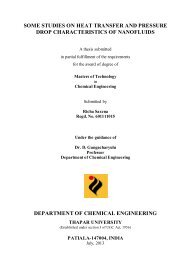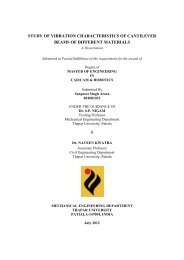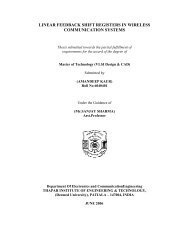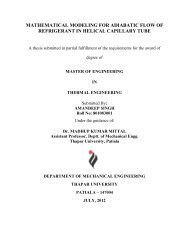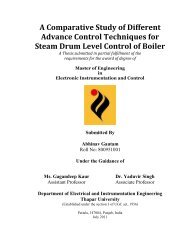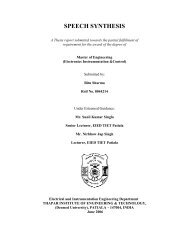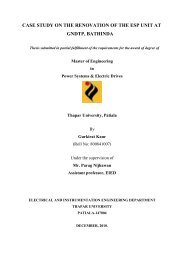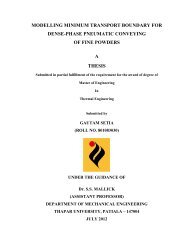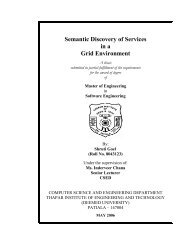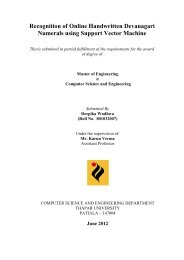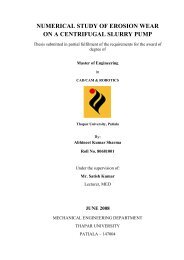from indigenous fermented foods and human gut ... - Thapar University
from indigenous fermented foods and human gut ... - Thapar University
from indigenous fermented foods and human gut ... - Thapar University
Create successful ePaper yourself
Turn your PDF publications into a flip-book with our unique Google optimized e-Paper software.
52<br />
Chapter III Material <strong>and</strong> methods<br />
change <strong>from</strong> blue to yellow was recorded as positive fermentation results compared with the<br />
positive <strong>and</strong> negative controls. Results were also compared with the absorbance of samples<br />
read at 620 nm in an automated microplate reader (Bioscreen C, Oy Growth Curves Ab Ltd.,<br />
Finl<strong>and</strong>).<br />
3.3.5 Strain selection <strong>and</strong> identification<br />
Gram-positive, catalase-negative rods <strong>from</strong> traditional <strong>fermented</strong> nondairy products<br />
<strong>and</strong> infant <strong>gut</strong> were selected for further studies to determine, if they were able to survive the<br />
successive passage through solutions mimicking saliva, gastric juice <strong>and</strong> intestinal juice.<br />
Strains with high survival rates were further identified using phenotypic <strong>and</strong> genotypic<br />
characterization <strong>and</strong> identification techniques as described below.<br />
3.3.5.1 Survival after the successive passages through artificial saliva, gastric <strong>and</strong><br />
intestinal juice<br />
To test survival under gastrointestinal conditions, the protective effect of milk <strong>and</strong> the<br />
effects of medium composition (lysozyme, pepsin, <strong>and</strong> pH of the medium) on bacterial<br />
viability were assessed in vitro using the method was adopted by (Ehrmann et al., 2002;<br />
Suskovic et al., 1997) in a model stomach/intestinal passage experiment in order to compare<br />
the survival of potential probiotic strains. Reconstituted skim milk (15% w/v, Merck) was<br />
inoculated with approximately 2 × 10 8 CFU/ml of an overnight culture of isolates. One ml<br />
aliquot was removed, serially diluted in QSR <strong>and</strong> plated onto MRS agar to determine the<br />
CFU/ml at 0 h.<br />
To simulate the dilution <strong>and</strong> possible hydrolysis of bacteria in the <strong>human</strong> oral cavity,<br />
the suspension was diluted to 1:1 ratio in a sterile electrolyte solution containing 6.2 g/l NaCl,<br />
2.2 g/l KCl, 0.22 g/l CaCl2 <strong>and</strong> 1.2 g/l NaHCO3 to which lysozyme was added to a final<br />
concentration of 100 ppm (parts per million), <strong>and</strong> incubated for 5 min at 37 °C. The sample<br />
was subsequently diluted in 3:5 ratio with an artificial gastric fluid, consisting of the



